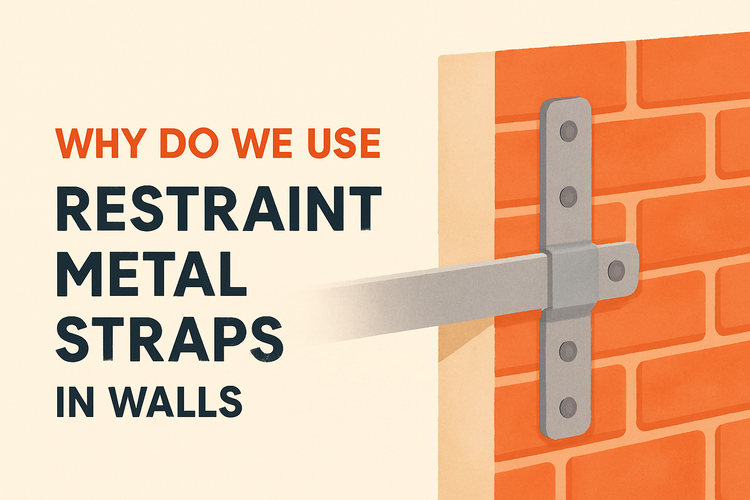Why Do We Use Restraint Metal Straps In Walls

The Purpose of Restraint Metal Straps in Wall Construction
Restraint metal straps offer crucial support in construction. They help maintain the structural integrity of walls, particularly where they join other building elements.
Often used in masonry and timber frame buildings, these straps help resist lateral forces such as wind and vibration. By tying walls to floors and roofs, they distribute loads and reduce the risk of movement or collapse. In areas with frequent high winds or seismic activity, restraint straps provide an additional layer of safety. Choosing the right type of restraint straps is vital to match structural requirements.
Enhancing Structural Stability
Stability is one of the primary reasons for using restraint straps in walls. These metal fixtures ensure that floor joists and wall frames remain fixed and rigid during external pressure or movement caused by settling or environmental forces.
When properly installed, restraint straps mitigate the flex and shift that can occur when walls are subjected to loads. In timber frame constructions, they prevent racking—the diagonal distortion that weakens a wall. Most importantly, they anchor upper floors and roofs to the building’s skeletal frame. For added support, timber frame connectors can work in conjunction with restraint straps to strengthen the overall structure.
Using restraint straps in combination with joist hangers helps distribute vertical loads more efficiently. This reduces the strain on individual components and extends the life of the structure.
Complying with Building Regulations
Compliance with local and national building codes is essential, and restraint straps often form a part of these requirements. Building regulations such as those in the UK mandate their use in certain scenarios to ensure resistance against lateral loads and improve occupant safety.
Installers must ensure that straps are correctly positioned and securely fixed, typically using approved screws and nails to prevent loosening over time. When used as directed, these straps support critical links between walls, joists, and wall plates. Non-compliance can result in structural failure or enforcement penalties.
Aside from code compliance, using restraint straps where needed reflects best construction practices. They support the construction of long-lasting buildings capable of enduring natural forces and daily wear over time.
Types of Restraint Metal Straps for Various Applications
Not all restraint straps are created equal. Their type and application can vary depending on the structural need and material being used.
Horizontal restraint straps tie walls to floor joists or ceiling supports, providing lateral resistance by anchoring the wall. Vertical restraint straps, on the other hand, hold down wall plates or gable walls, particularly in roofing areas. These are often paired with roof connectors to form a solid, unified roof and wall system.
Galvanised steel is the common material used for these straps, offering durability and corrosion resistance. Pre-formed straps with bends and notches allow for easier adaptation to site-specific geometry, reducing installation time. Some advanced models even feature slotted holes for flexible alignment and adjustment on-site.
Installation Best Practices for Maximum Effectiveness
Correct placement and secure fixation are essential for restraint straps to perform optimally. Whether mounted horizontally or vertically, straps must be fitted tightly against the building components with no gaps that could undermine their function.
It's advisable to use manufacturer-approved screws and nails for dependable and lasting strength. Typically, restraint straps are fixed into at least three timber members, providing adequate distribution of force along the structure. They should never be cut or modified on-site without engineering guidance, as this may compromise their effectiveness.
Complementing restraint straps with other structural elements like angle brackets ensures wider load distribution. In high-stress environments, upgrading to heavy-duty versions or using additional support such as high wind ties & timber connectors provides reinforcement.
